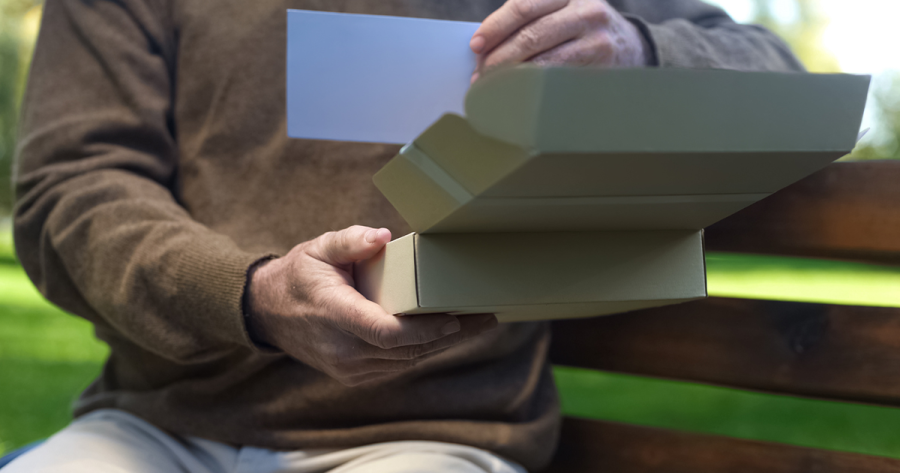Caring for a loved one living with dementia is a journey filled with challenges, but it also offers opportunities to create meaningful moments of connection. One powerful tool for fostering these moments is a memory box—a personalized collection of items that spark memories, comfort, and conversation. These simple yet effective tools can bring joy to your loved one and help you stay connected as your loved one changes due to dementia.
What Is a Memory Box?
A memory box is a container filled with carefully chosen items that have personal meaning for your loved one. These objects often represent significant moments, interests, or relationships from their life. Memory boxes can include a wide variety of items, such as photographs, letters, souvenirs, or even items with specific textures, smells, or sounds that evoke pleasant memories.
The goal is to create a tangible bridge to your loved one’s past—a way to reconnect them with moments that brought them happiness or comfort.
How Memory Boxes Help
For people living with dementia, the ability to recall past events may fade, but the emotions tied to those memories often remain. Memory boxes tap into this emotional memory, helping to:
Spark Conversation: The items in the box can prompt your loved one to share stories or feelings, even if they have difficulty forming complete memories.
Provide Comfort: Familiar items can soothe anxiety or agitation, offering a sense of safety and grounding.
Encourage Engagement: Handling objects and talking about them provides a sensory experience that can stimulate cognitive activity and lift their mood.
Strengthen Bonds: Sharing a memory box together offers an opportunity to connect on a deeper emotional level.
How to Create a Memory Box
Creating a memory box doesn’t have to be complicated. Here’s how to get started:
Choose the Right Container: Select a sturdy, easy-to-open container that can hold various items. Consider decorating it with your loved one’s favorite colors or themes to make it inviting.
Select Meaningful Items: Think about your loved one’s life, interests, and preferences. Here are some ideas:
- Photographs of family, friends, or special places.
- Letters or Cards from loved ones.
- Souvenirs from trips or special events, like ticket stubs or postcards.
- Textured Items like a piece of fabric from a favorite outfit or a soft scarf.
- Fragrances like a small sachet of lavender or a familiar perfume.
- Hobby-Related Items such as gardening gloves, knitting needles, or fishing lures.
Involve Your Loved One (If Possible): If they are able, invite your loved one to help select items for their memory box. This can be a fun and meaningful activity in itself.
Keep It Flexible: As your loved one’s needs and preferences change, update the items in the box to keep it engaging and relevant.
Using the Memory Box
Once the box is ready, set aside quiet time to explore it together. Let your loved one handle the items and guide the conversation. They may share a story, smile at a memory, or simply enjoy the sensation of holding something familiar.
If your loved one is nonverbal, observe their responses. Do they seem calmer? Do their facial expressions change? Even subtle reactions can indicate that the items are bringing them comfort.
Tailoring the Box to Their Stage of Dementia
For those in the early stages, include items that encourage reminiscing and conversation. In later stages, focus on sensory items like soft textures, familiar smells, or simple objects that evoke comfort.
The Gift of Connection
Memory boxes are more than just a collection of objects; they’re a way to create moments of joy, comfort, and connection. By honoring your loved one’s unique story and filling their memory box with meaningful treasures, you’re helping to preserve their sense of self while nurturing the bond you share.
If you need dementia caregiver support, please join my dementia support group or schedule your 30-minute consultation.
Connect with Tami
Get information, guidance, and support delivered to your inbox each month.

